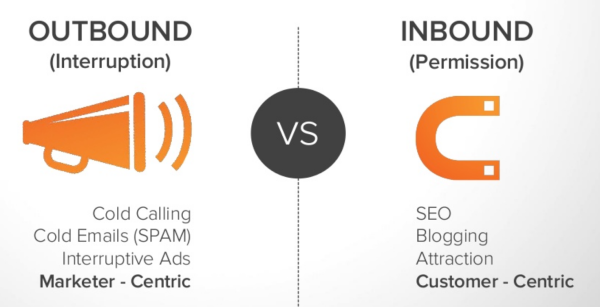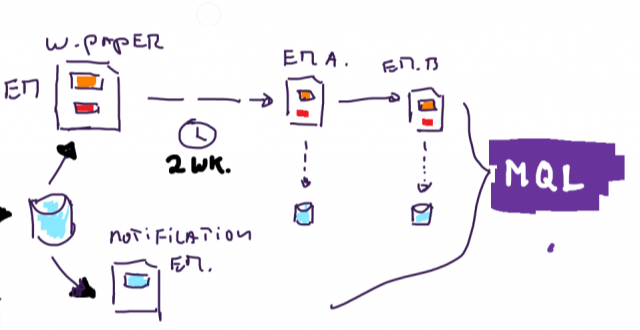Digital Marketing: what is it? & Where are opportunities?
Today, we spend twice as much time online as we did 12 years ago, and with that, a lot has changed. Because we have unlimited access to information, the way we make purchases - both in B2C and B2B - has changed dramatically. This is the reason why traditional marketing methods are less effective than they were a few years ago.
Marketing is about connecting with your target audience in the right place at the right time. Today, that means meeting your target audience where they spend the most time: on the Internet.
That's where Digital Marketing comes in. Digital Marketing is umbrella term for all your online marketing efforts. Or in other words, any form of marketing that is online.
But what exactly is Digital Marketing?
 Digital marketing is the promotion of your business by using online
Digital marketing is the promotion of your business by using online
channels and concepts, such as the website, search engine optimization, digital advertising (paid), social media, blogs etc. to achieve the goals.
From the website to online branding, there is a whole spectrum of tactics and tools that fall under the umbrella of Digital Marketing. The most successful Digital Marketers have a clear picture of how each resource and tactic contributes to achieving the goals.
I've listed the most common Digital Marketing tools and tactics for you:
|
Most Used Digital Marketing Resources |
Most used Digital Marketing tactics |
|
Website |
Search Engine Optimization (SEO) |
|
Blogs |
Content Marketing |
|
E-books and Whitepapers |
Inbound Marketing |
|
|
Email Marketing |
|
Landing Pages |
Social Media Marketing |
|
Infographics |
Marketing Automation |
|
Social Media |
Digital Advertising (Paid) |
What is the difference between Digital Marketing and Inbound Marketing?
We often talk about Inbound Marketing and at first glance, Inbound Marketing and Digital Marketing look similar. Both are focused on online and content creation. And while many marketers will say that Inbound Marketing and Digital Marketing are pretty much the same thing, there are some differences.
The term Digital Marketing does not distinguish between "push" and "pull" marketing tactics (or "inbound" and "outbound" methods). Both approaches fall under the umbrella of Digital Marketing.
Outbound methods focus on sharing a marketing message with as many people as possible - regardless of whether it is relevant, and whether or not the target audience is waiting for it.

On the other hand, marketers employing inbound tactics use online content to attract key target audiences by sharing only content that is of value to them. One of the most powerful Inbound tools is a blog, which allows you to create content that adds value and answers questions from your ideal customer.
Ultimately, Inbound Marketing is a method that uses Digital Marketing tools to attract potential customers, convert them to leads and ultimately close the deal. Digital Marketing is simply an umbrella term to describe online marketing efforts - of any kind - whether inbound or outbound.
Does Digital Marketing also work for B2B companies?
Digital Marketing can work for any business in any industry. Regardless of what your company sells, Digital Marketing is still about defining the target audience,identifying the wants and needs of the target audience and creating valuable content. However, that does not mean that B2B companies should do it the same way as B2C companies.
Unlike B2C companies, B2B companies' Digital Marketing activities are generally focused on online lead generation with the goal of eventually speaking to someone in Sales. Therefore, your marketing strategy should aim to attract and convert qualified leads through the website and other digital channels such as social media and email, for example. So that you can eventually hand them over to Sales.
What is the main advantage of Digital Marketing?
Unlike most offline marketing efforts, Digital Marketing allows you to see results in real time. If you have ever placed an ad in a newspaper you know how difficult it is to estimate how many people actually saw the ad. You don't know how many sales that ad was responsible for - if any.
With Digital Marketing you can measure the ROI of almost any of your marketing efforts, such as, for example:
- The number of website visitors per month
- The number of (qualified) leads per month
- The number of conversions per blog or landing page
However, there is one prerequisite: you must have the right tool(s) to make your efforts measurable. Why? All the separate channels, which you manage independently of each other, ultimately give no insight into how much traffic, leads and customers Digital Marketing now ultimately brings you. While you do need these results to demonstrate the added value of your efforts.
Fortunately, there are tools available that give you insight into this. Another term for this is Marketing Automation.
Because Digital Marketing makes it easier to make all efforts measurable, you can also make adjustments much more easily. For example, if only 10% of the total number of website visits come through organic traffic, then you know that this is an area for improvement that you can target.

Digital Marketing also works in niche markets
It seems clear to me that Digital Marketing is indispensable to be wherever your customers and prospects are, namely the Internet. And this is true not only for B2B companies operating in a large playing field, but also for B2B companies focusing on niche markets, such as companies in the manufacturing industry.

Want to get the most out of HubSpot? Subscribe to our newsletter, follow us on LinkedIn, or attend our HubSpot User Days!
Explore HubSpot User DaysShare this
You May Also Like
These Related Stories

Email marketing [2021] again most important channel for B2B

Inbound marketing: marketing without advertising | Webs


